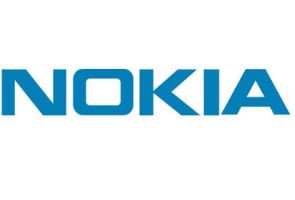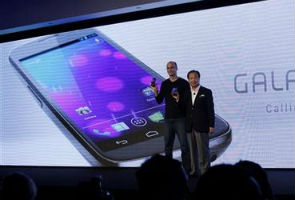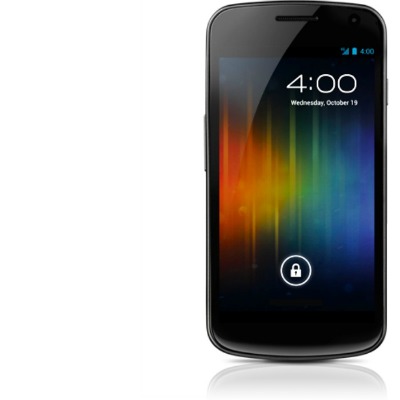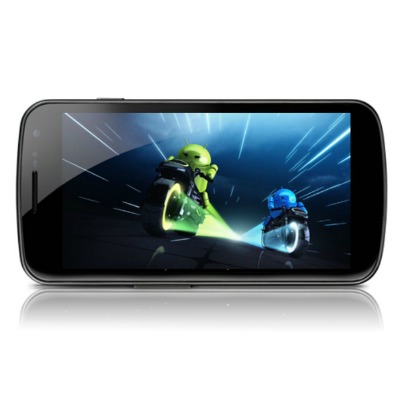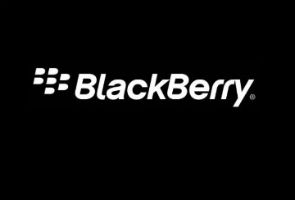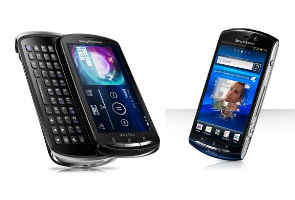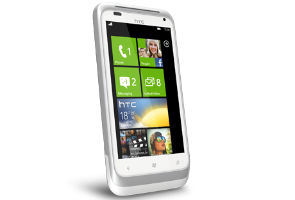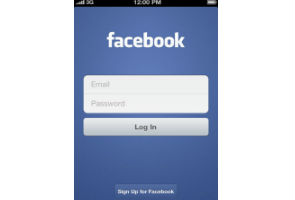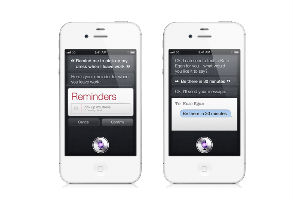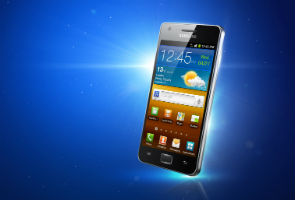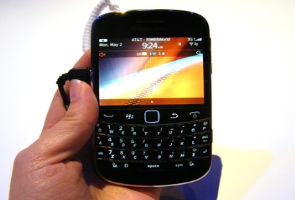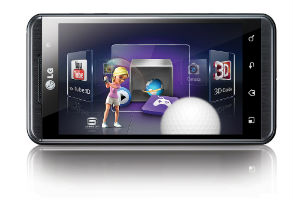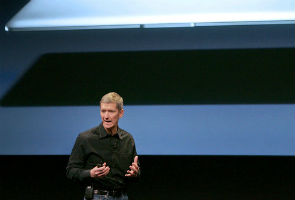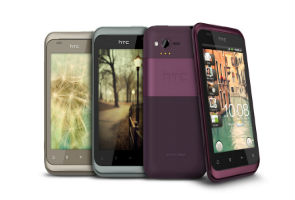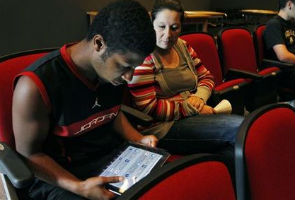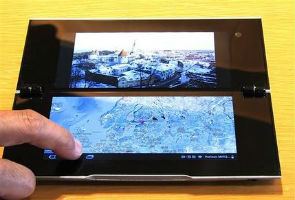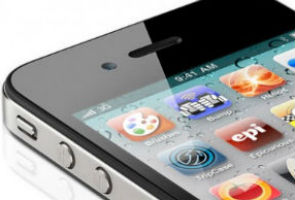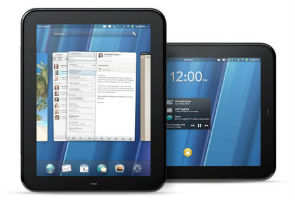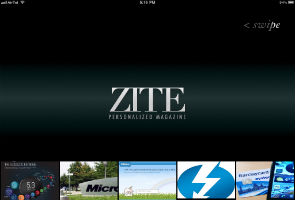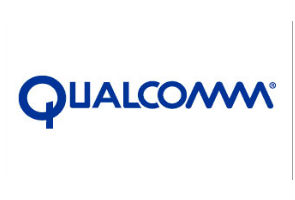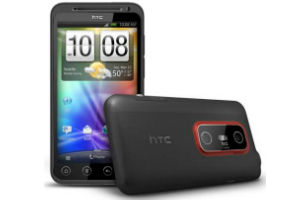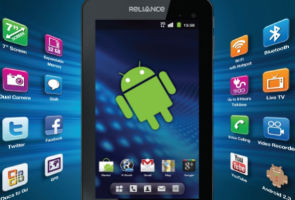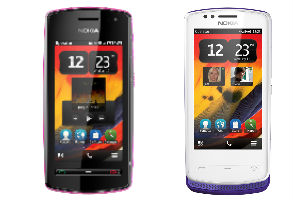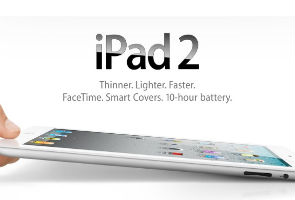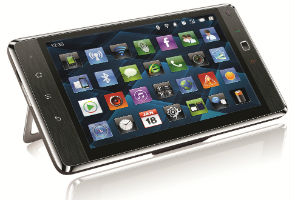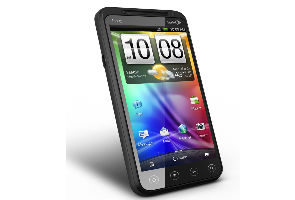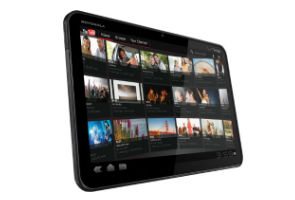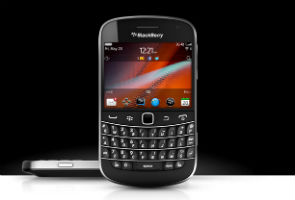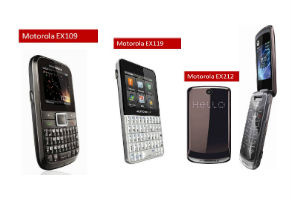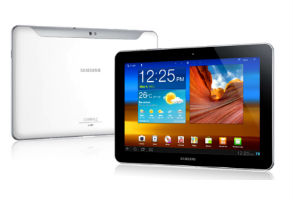There seems to be no end in sight for the Tablet frenzy. After the iPad 2
and the Android Honeycomb armada, here is Reliance's latest 7-inch, 3G
tablet which runs Android 2.3 Gingerbread and comes bundled with a
multitude of 3G plans. At the outset we have to say that for a change
this one does not follow the monotonous similarity of all the other
Android tablets. Lets see if this one breaks the ice with the Indian
masses.
Packaging and ContentReliance gives us
the standard set of goodies including the power cable, the USB cable,
the 4-gigabyte memory card and also a pair of super-cheap headphones.
But yes, headphones. Apple, are you reading this? If Reliance can, so
can you - give us headphones with the iPad!
Hardware and StylingAt
Rs 12,999, this is not the cheap Chinese built tablet one would expect.
Even though its clearly 'made in China' courtesy ZTE, its at the higher
end of the spectrum. With its brushed aluminum like plastic finish in
the rear, the device indisputably feels well built. Interestingly, the
rear casing is removable which means we can access the 3400 mAh battery,
alongside the Reliance sim-card slot and the MicroSD memory-card slot.
We also get the 2-megapixel camera in the rear end of the device.
The
front-end of the device welcomes us with 7-inch capacitive touch
display along with the three Android touch buttons and the VGA front
camera, which facilitates video chats.
On the right hand side,
we get the customary volume rocker and the unusually placed power
button which has clearly borrowed from Samsung. Actually, the Reliance
3G tablet can easily be mistaken for the original 7-inch Samsung Galaxy
Tab, the only difference being the finish in the rear.
On
the top, we get the standard 3.5 mm audio jack and the bottom houses
the micro-USB port. Besides these both the top and bottom have a speaker
modules.
InterfaceWe get impression that this
tablet was designed more as a means to promote Reliance's 3G network.
The only way that is going to happen is if the users have a decent
interface at their disposal, and stock Android pretty much offers
exactly that. Unfortunately, someone at Reliance thought that they could
out-do Google and build a better user interface. Bad idea guys, even
premier smartphone manufactures like Samsung and HTC haven't come up
with anything better than vanilla Android.
The moment we powered
the device up we were at the mercy of the unwholesome Android skin
Reliance has specially developed for it.
Funnily, for the first
15 minutes we were wondering if the device had a resistive display or a
capacitive one, which was Reliance's claim. After struggling with the
horrid touchscreen response we lost patience and decided to install
LauncherPro which is the best third party Android skin available. The
moment LauncherPro was ready the tablet became a pleasant device to use.
Apparently,
the Reliance skin was consuming so much of processing power from the
device that it was left almost unusable for any other task.
If
you have been reading our reviews, you will know we are not big fans of
Android skinning, even from companies like HTC who deliver the very good
HTC Sense UI, and here's why.
Android skinning never works, as
the best Android is the one delivered by Google - it is fast, smooth and
intuitive. Skinning slows down the device, it clutters the user
interface and rarely adds any functionality that stock Android does not
have.
This is a direct indictment of the Android ecosystem where
OEMs have the license to pollute the software and pass on any
bloat-ware to the consumer in the name of differentiations and
marketing. Hopefully, this will change in the near future.
Lets
be clear out here - we are not saying that the 3G tablet is a bad
device, actually the reality is quite the opposite. What we hate is
Reliance's decision to pollute the OS with their skin just for the sake
of pushing the Reliance brand. Make no mistake, that's what it is. They
may claim that their user interface is unique but it is not. It does not
add even one bit of functionality to the device that is not already
available on stock Android.
MultimediaMultimedia
is normally a tablet device's forte as the tablet form-factor is
optimized for multimedia consumption. The Reliance tab is designed for
this purpose only.
As the device runs on Android 2.3 Gingerbread
it is as adept as any other Android smartphone on the market when it
comes down to multimedia.Admittedly, it tends to get a tad slow but hey,
it costs Rs 12,999. That price won't get you any dual core goodies and
we don't think many will care, either.
For music we get the
stock Android music player. Despite the lack of the visual flamboyance
of an iTunes-style cover flow interface, it's very functional and easy
to understand. It organizes one's music pretty neatly. One can easily
sort out assorted music according to Artists, Albums, and Genre or even
according to the song name. A built-in equalizer would have been great,
but, again, the price bracket doesn't allow.
Oh well. We're probably suffering from the Samsung Galaxy Tab blues, which is higher up on the tablet food chain.
For
video, we have the standard Android Video player, and also a myriad of
free alternatives making the rounds of Android Market. The video player
is a pretty barebones experience. No HD video playback, which is a
bummer, but HD video playback does require at least an 1GHz processor.
Besides this, the device handled most of the standard video formats
pretty well, though one would do well to shut down all apps before
starting a video.
We should also mention that the display does not boast of a very high resolution and can look bland at times.
Reliance did not mention the exact resolution of the display but we are assuming it to be below 1024x600.
Reliance
has added dual cameras - a 2-megapixel snapper in the rear and a VGA
resolution one for video chats. Our summation was not very good. They
produce some disastrous pictures filled with noise, grain, poor colour
and so on. We can actually write a whole other article just on the cons
of the cameras. To tell the truth, a 2004 Sony Ericsson S700i could
click better pictures. But yes, you will at least get the bragging
rights and the VGA front camera will be more than adequate for video
chats. We are guessing Skype will come in handy.
PC Sync and Market This
is one area where the device excels. PC sync as with all Android
devices is quite painless courtesy Google Contacts. The moment we popped
open the Reliance tab we logged into our Gmail ID and eureka! we had
all our contacts.
As far as Android Market goes, we do get a
wholesome selection of apps to choose from, as this is an Android 2.3
Gingerbread device. Some 300,000 apps are at our disposal so be rest
assured you will be playing around with the device for a long time.
Essential AppsWhile
Reliance added its skin on the Android interface, they thankfully did
not install any bloat-ware on the device. The device could hardly stand
on its feet with the Reliance skin, with multiple apps it would have
been dead on arrival. In spite of this, we do see some Reliance apps
such the Rworld which is basically an app linked to their network
services and Reliance Mobile TV. The Mobile TV app is basically a
spin-off of the one for the iOS. We must say this is quite a handy app
as it streams most of the major TV channels on subscription. The
streaming quality is pretty good and utilizes the Reliance 3G connection
to its fullest. Reliance must be hoping for such services to catch the
fancy of the middle-class as they unlikely to make much money on the
device itself because of low margins. The one place they can cash in is
on their 3G network, and basically they are hoping that the 3G Tablet
will act as a catalyst for the 3G market, still at a nascent stage and
riddled by poor connectivity and expensive data charges.
PerformanceLets
be clear - this isn't the fastest tablet around. Reliance also claims
this device features 512MB of RAM but they don't mention clock speed or
the processor type. We believe it is a processor from the ARM cortex A8
family clocked at 800 MHz which is more than adequate for day-to-day
tasks, though we must admit it's not ideal for multi-tasking.
The device was pretty snappy once we got rid of the Reliance embellishments, but we ran our standard tests to make sure.
So
we started with Quadrant and guess what, it crashed. The same happened
with Linpack and Benchmark Pi. This was pretty disappointing, but we are
assuming this happened because the processor was not supported by the
benchmarks.
The only test we managed to run successfully was the
web-based Rightware Browsermark test. The results were not very
encouraging with a paltry score of 15646. In real-world testing, things
were quite different as web pages rendered quickly and we did not
encounter many flash problems. Suffice to say we were more than
satisfied with the performance.
When it came down to battery
life the device lasted around 6 hours, which included constant 3G usage,
some phone calls and multimedia consumption. This was quite impressive
considering the battery in question is a 3400 mAh.
Another
noteworthy mention is the loudspeaker, which handled duties while we
used the device as a phone and it also came in handy when we listened to
some music. It was loud and clear most of the time. Normally, Chinese
tablet manufactures employ their cost cutting tactics in areas such as
this but,thankfully, the Reliance 3G tablet does not suffer from this
syndrome.
VerdictThere is a lot to like about
the Reliance 3G tablet including decent build quality and a fairly
functional feature set. Once we couple these features and the Rs 12,999
starting price tag with the myriad of 3G plans the offer becomes
tastier. Clearl,y this device is not meant to be a workhorse. As a
multimedia consumption hub the device fits the bill perfectly.
One has to admit the Reliance Tab has the potential to open up the 3G market in the country.
Price: Rs 12,999
ProsValue for Money
Good Battery Life
Decent Performance
ConsReliance Skin
Average display
Bad camera
Ratings Performance: 3.5
Price: 5
Ease of Setup: 4
Ergonomics: 4
Wow Factor: 3
